Thai orchids: features and types
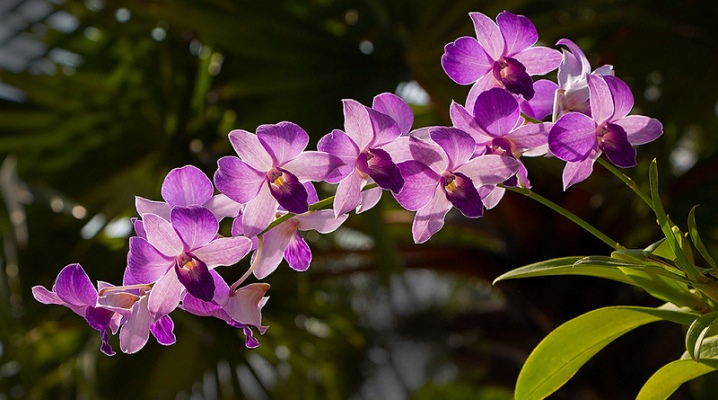
Orchids are graceful beauties native to the hot tropics. They live in any climate except cold and arid regions, as well as in houses and apartments thanks to successful breeding work. In Russia, they are grown in hanging pots or pots. There is another special way of growing orchids - in bottles. These unusual flowers are brought from Thailand.
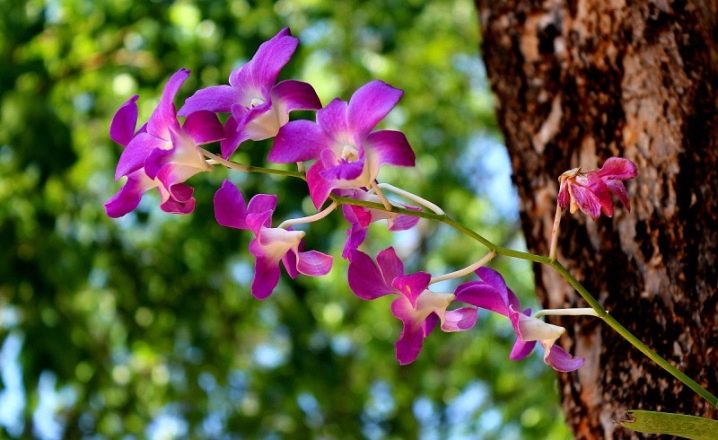
Peculiarities
When visiting Thailand, tourists are surprised by the abundance of orchids everywhere. They are found at every step: at the airport, at the entrances to shopping pavilions, on the streets. Thailand is rightfully called the country of orchids. More than twenty thousand plant species grow here. Some of them grow on trees, while the rosettes of others are carefully fixed by the Thais in coconut pots or a vessel carved from wood.
Tourists take the Thai orchid to their homeland not in pots, but in an airtight container with a nutrient gel. This method of "packing" was invented especially for them, since the export of the roots of sprouts in the ground is prohibited by the internal laws of the country. One flask contains 3-5 shoots of one plant species.

Purchase
Coming to Thailand and leaving without orchids is nonsense. In Bangkok, they are sold at flower markets and farms.... There are markets selling cut flowers. At the Pak Klong Talad market, which operates around the clock, plants are offered for sale in bales, boxes, baskets, wholesale and retail. For fear of not going through customs control, tourists buy bouquets on the day they leave the country. They are attracted by the low price and richness of choice, but sometimes common sense keeps them from buying - there is a great risk that orchids will wither during the flight.
During an excursion along the Chao Phraya River, tourists are brought to an orchid farm. Paying a small entrance fee, they wander around the farm, watch the beautiful orchid grow, capture the specimens they like on a photo or video camera, buy the flowers they like. At first, they think that only "Wandas" and their derivatives grow here, but then they find many other types of orchids in secret corners.
Buying one plant is significantly cheaper than elsewhere.
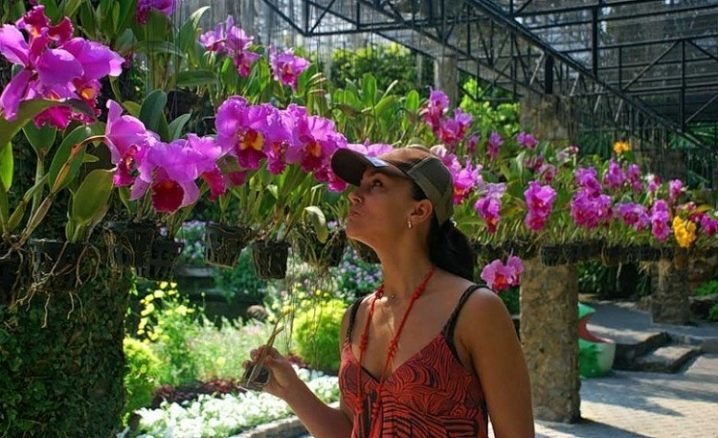
If you are interested in orchids in flask (flask), drop by the Sanam Luang 2 market in the vicinity of Bangkok. They are the cheapest here. When passing through customs control, you cannot take them with you on board the aircraft. The ban is valid for safety reasons: the flask is easily damaged and the gel will leak out. Checking in luggage, they are wrapped in toilet paper and wrapped in a towel.
Of all the flowers for sale, the most expensive are the species orchids. In order not to have problems with the export of orchids with roots and soil, they require a phyto-certificate from the seller. In its absence, the roots are shaken off the ground and carefully wrapped in paper.
To export flowers from Thailand, they do the following: go to the branch of the Rosselkhoznadzor in Russia, fill out the import documents and translate them into Thai. Thailand makes the same export permit. The received documents are presented when passing through customs control.
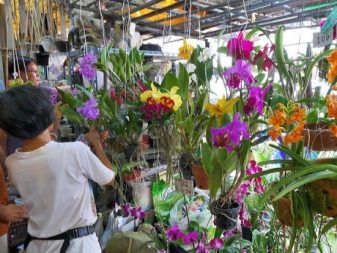
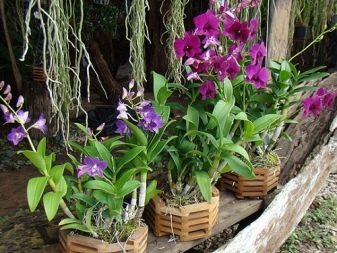
Recommendations
Orchids in a flask will not take root and will not bloom if you ignore the advice of experienced florists. For 2-3 weeks after returning from Thailand, the sprouts are not removed from the flask: they need to recover from stress. For quick adaptation, they are placed on a well-lit windowsill, but the bottle is kept closed. They cannot be transplanted into a substrate or placed in another flask if:
- the shoots have not grown up;
- the nutrient gel has not run out (this is determined by the blackened leaves).
The orchid is transplanted earlier if mold appears in the flask.
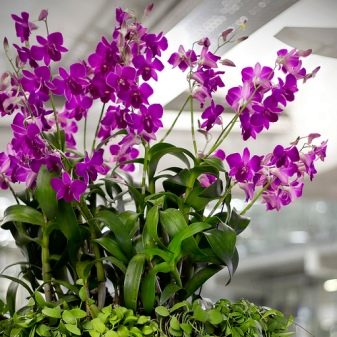
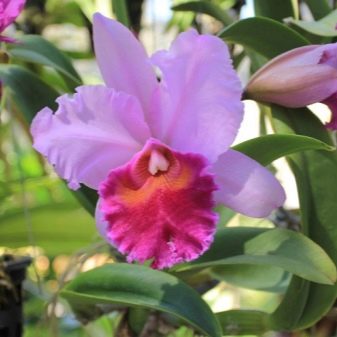
Transfer
Like other houseplants, flaska orchids are best replanted in the spring. This will require the following materials.
- Paper towels.
- Warm tap water.
- Small paper cups or seedling pots with lots of holes on the bottom.
- Substrate.
- Pebbles or Styrofoam for drainage.
To prevent the orchid from dying, the transplant is carried out under sterile conditions.
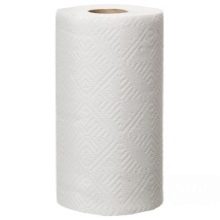
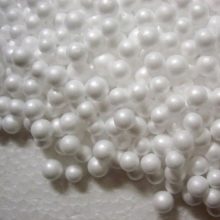

Tips for removing from flask
You can export orchids from Thailand in a plastic or glass flask. When transplanting, problems arise, since flower growers do not know how to remove them from the container. If the flask is made of plastic, cut it with scissors and take out the sprouts. It is more difficult to remove the sprouts from a glass bottle, but there is a way. The bottle is wrapped with duct tape and wrapped in a bag or newspaper, and then hit with a hammer.
Such extraction is safe for the flower: fragments will not damage the roots of the orchid.
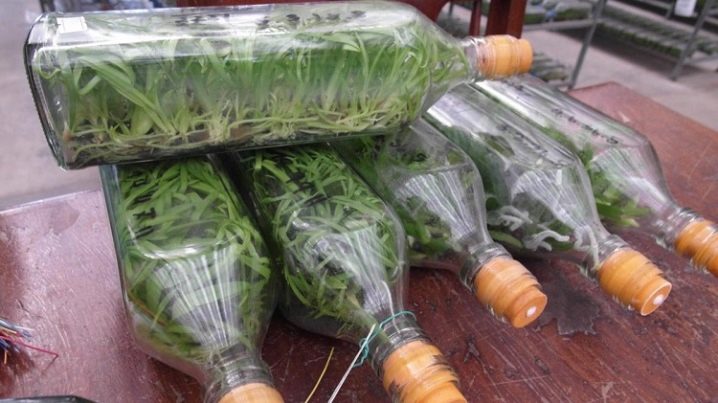
Preparation of seedlings
After the sealed container is broken, the seedlings are washed. Water is poured into sterile dishes to slightly rinse the roots and wash out the bulk of the agar. Then remove the entire mixture from the roots and leaves under running warm water. Agar is washed off especially thoroughly: if not completely washed off, it can cause rotting of the seedling. If the sprouts are rotten, they are treated with foundation, and if not, then with phytosporin. They are left on paper towels until the water is completely absorbed.
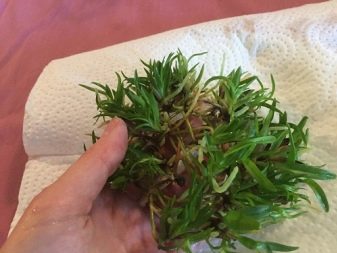
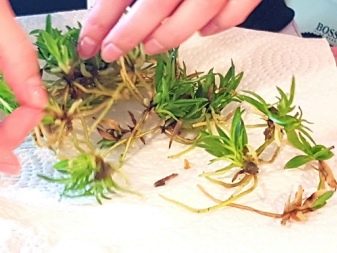
Substrate preparation
It depends on the type of orchid brought from Asia, what substrate is being prepared for it.
- For "Wanda" the substrate is not needed at all. It is placed in a plastic cup and then placed in a large glass of water.
- For "Phalaenopsis", "Dendrobium", "Katleya" and "Pafa" prepare a substrate from bark, moss, coal. All three components are taken in equal proportions, but you can put a little less moss.
The substrate is spilled with boiling water, kept for 2-3 minutes in the microwave or boiled. It is dried for at least 2 days, and only then an Asian beauty is transplanted into it.
This technology for preparing the substrate is a sure way to get rid of the mixture from pests and their eggs.
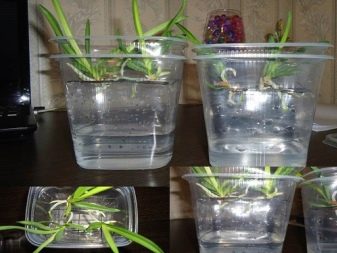
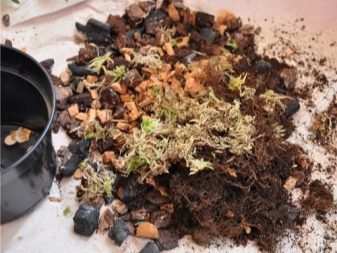
Planting a plant
Before planting orchids, it is determined whether the seedlings are healthy or not. If damage is found, the seedling is discarded. Otherwise, it will still not take root and harm others. Do not separate the sprouts pulled from the flask into different pots. They are planted in one pot, making a small depression in the center in the substrate. Sprinkle the roots with soil mixture on top.
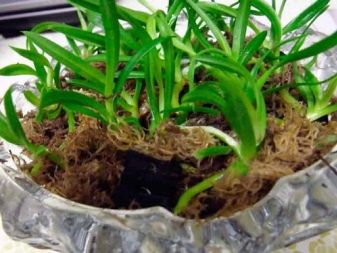
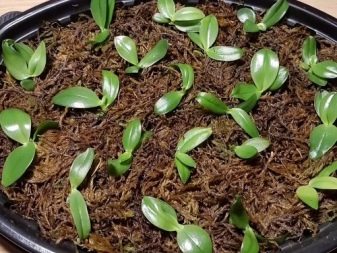
Care Tips
After transplanting, the seedlings need an abundance of sunlight and a little moisture. In the first 5-7 days after transplanting, they are not watered, but sprayed with fertilization every other time. Gradually they move on to the usual watering: water is poured along the edge of the pot, without getting into the outlet. Watering is carried out, making sure that the substrate is completely dry.
As soon as one leaf appears on each of the orchid seedlings, they are planted in separate pots. To do this, choose a small pot and change it to another larger diameter every 3-4 months, until the plant gets stronger. After that, the transplant is done less often - once every 2-3 years.
Some orchid lovers take out the sprouts from a bottle brought from Thailand as soon as they arrive home. They are doing wrong.
It is better not to rush to transplant, but to wait until it adapts to new conditions and the sprouts grow up.
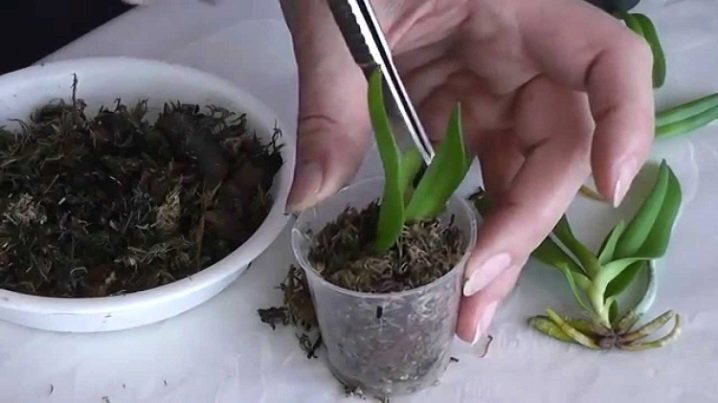
You can find out how to properly transplant an orchid below.































The comment was sent successfully.